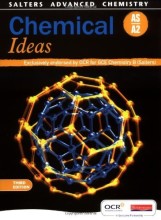Colour by Design - Gas-liquid chromatography
12 important questions on Colour by Design - Gas-liquid chromatography
What can be said about components with a higher affinity in the stationary phase?
They move more slowly than those with a lower affinity.
What is meant by a stationary phase in gas-liquid chromatography? What acts as the mobile phase?
A non-volatile liquid coated in the surface of finely divided solid particles. This material is packed inside a long thing column which is coiled inside an oven.
An unreactive carrier gas acts as the mobile phase and carries the mixture through the column. (REFER TO DIAGRAM p. 56 revision txtbook)
What two substances can be used as inert carrier gas in Gas-liquid chromatography?
Nitrogen or noble gases
- Higher grades + faster learning
- Never study anything twice
- 100% sure, 100% understanding
As each component emerges from the column in gas-liquid chromatography, where is the peak recorded?
On a chromatogram
In gas-liquid chromatography, what is the area under the peak proportional to?
The amount of component in the mixture.
What would be the effect on the retention time of increasing the flow rate of the carrier gas?
It would be reduced.
Often the outlet from g.l.c. instrument is connected to a mass spectrometer. As a result, what extra information could be obtained about the mixture?
The relative molecular mass of each component.
When analysing oils in paintings, why are the methyl esters of fatty acids used to run g.l.c traces rather than the acids themselves?
The methyl esters are more voltile than the fatty acids and they will have less affinity for the column = chromatograms can be produced more quickly.
How can the relative amounts of each component be calculated in g.l.c?
The relative areas under each peak on the chromatogram are a measure of the concentrations.
What is the Rf value?
The distance travelled by the substance divided by the distance traveled by the solvent.
What name is given to the process by which components in a mixture are separated during g.l.c?
Adsorption
Explain how the gas/liquid chromatogram could be used to determine the % composition of each component in the mixture.
- measure the area under the peak
- Find the total area
- % = (area of one peak / total area) x 100
The question on the page originate from the summary of the following study material:
- A unique study and practice tool
- Never study anything twice again
- Get the grades you hope for
- 100% sure, 100% understanding
































